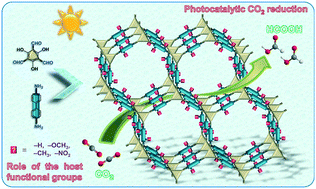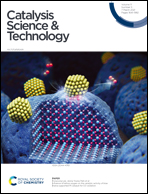Visible-light-driven photocatalytic CO2 reduction over ketoenamine-based covalent organic frameworks: role of the host functional groups†
Abstract
The photocatalytic conversion of CO2 into valuable chemicals is a promising and sustainable approach for solving the worldwide environmental and energy problems. In the current work, a series of ketoenamine-based covalent organic frameworks (COFs) with different functional groups in the same host framework, named TpBD-X [X = –H2, –(CH3)2, –(OCH3)2, and –(NO2)2], were synthesized to study how different functional groups affect the overall photocatalytic CO2 reduction for the first time. The differences in morphology, light-absorption intensity, and band gap among these functionalized COFs were also investigated. Compared to the electron-withdrawing groups, the electron-donating groups in TpBD can have a stronger conjugation effect and accelerate photogenerated charge separation and transfer, thereby improving the photocatalytic performance for CO2 reduction. This work is beneficial for the understanding of the effects of the functional groups on the light-absorption intensity, band gap, and charge transfer that are key parameters in photocatalysis, and therefore provides a new approach for designing efficient COF-based photocatalysts for CO2 reduction.



 Please wait while we load your content...
Please wait while we load your content...